- Published on
WHY2025 CTF - Forensics challenges
The WHY2025 CTF took place from August 8th to 11th. We solved all 5 out of 5 Forensics challenges. You can find more information about the CTF here.
toshredsyousay
Description
I bought a new shredder and I just tested it. I think it does a decent job, I made a scan of the results, what do you think?
Solution
There was a .pdf file provided. The file had a photo of a shredded piece of paper with data. First, I converted the .pdf to .png for easier editing:
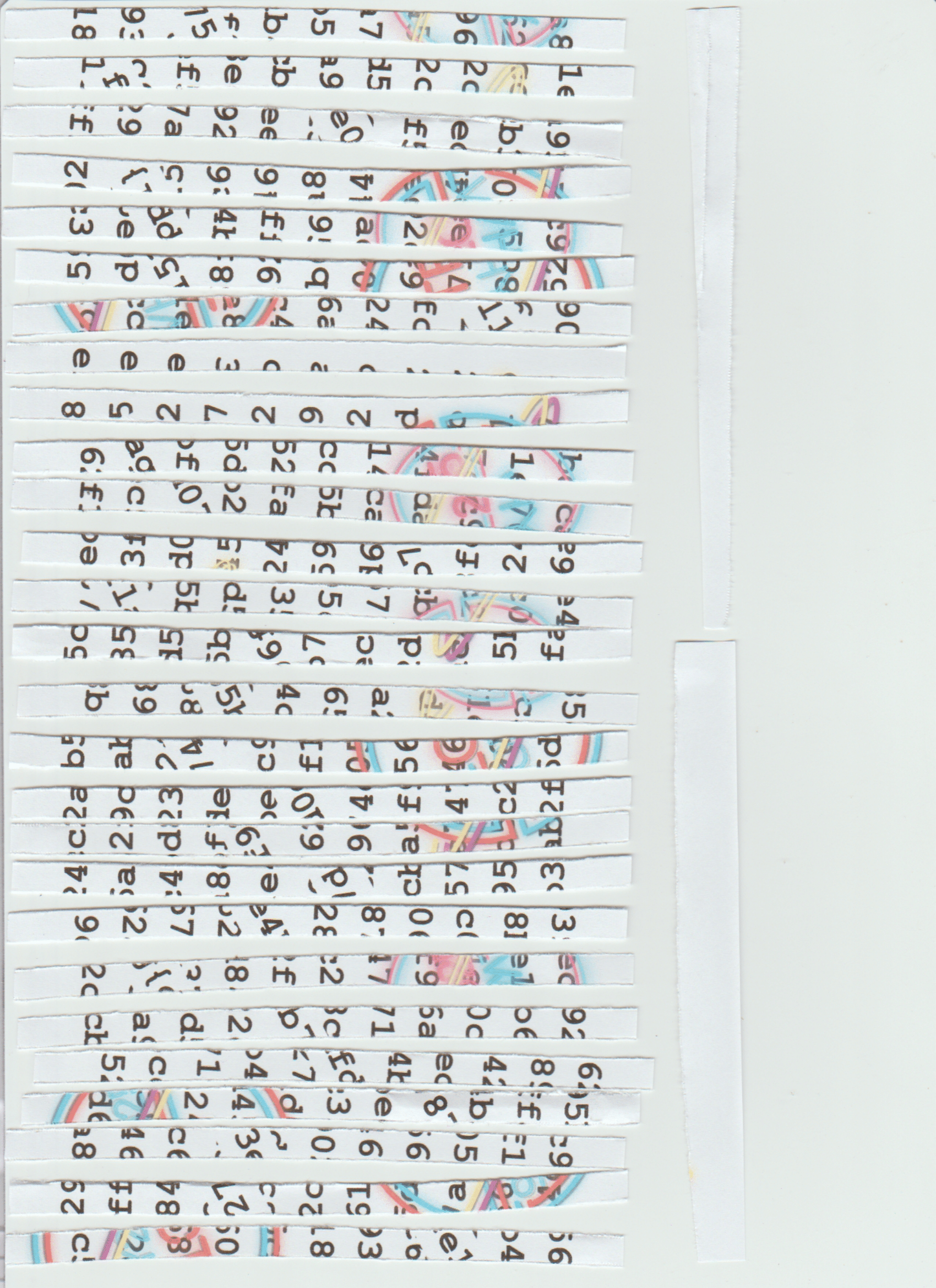
Since I couldn't rearrange the physically, I used GIMP to cut and digitally move them. After that I got the flag:
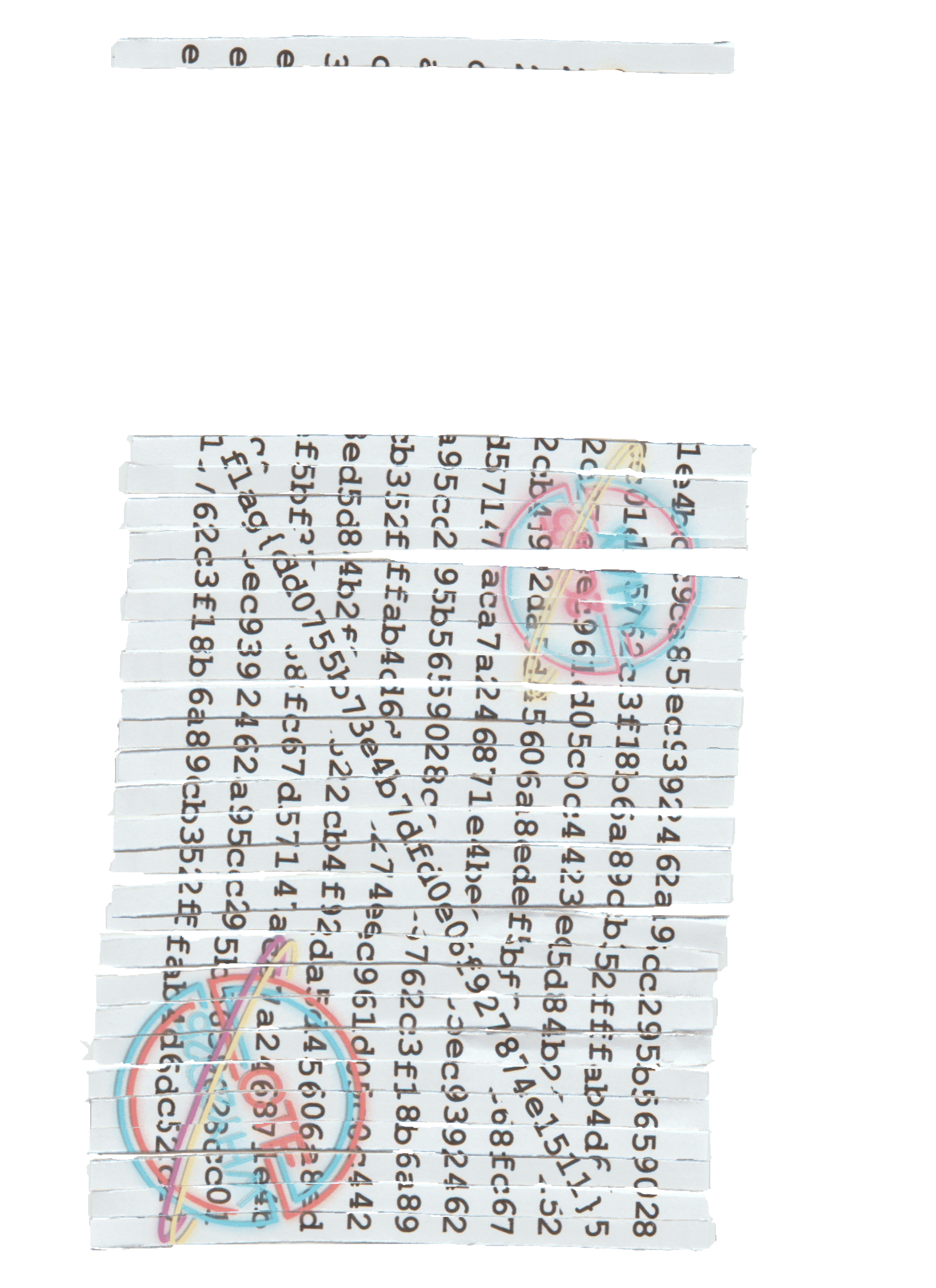
flag{dd0755b73e4b7dfd0e06f927874e1511}
Writeup author: 0xcheba
The Wizard
Description
After some issues involving a robe and wizard hat, HR decided it was best if we let go of this old developer we had. However with him gone we now lost access to some systems, since he had his own way of saving passwords. Can you help us out?
Solution
Several files from the user's home directory were provided:
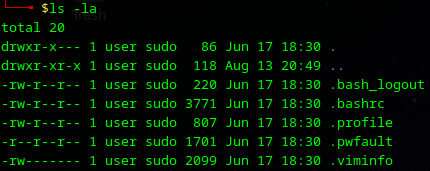
The .bash_logout, .bashrc, and .profile files contained no useful information. The .pwfault file appeared to contain encrypted (or obfuscated) data:
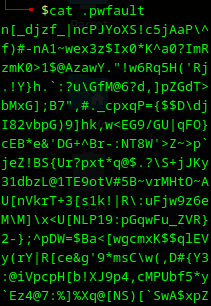
There was also a .viminfo file containing command and file history:
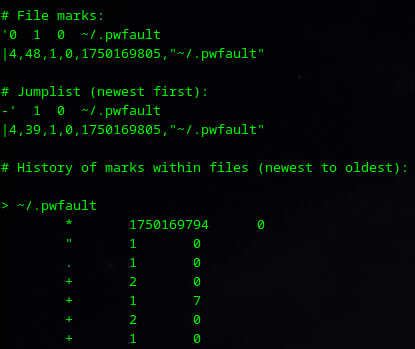
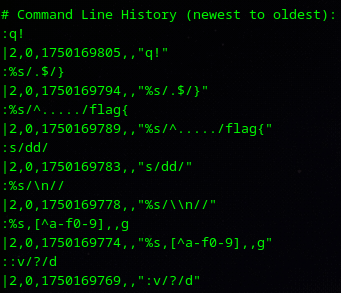
The following table explains all the commands used to perform data transformation:
| The command | What does it do |
|---|---|
:v/?/d | Removes all lines that don't contain a "?" symbol |
:%s,[^a-f0-9],,g | Removes allcharacters that are not in hex |
:%s/\n// | Removes all newline characters |
:s/dd/ | Removes the first "dd" |
:%s/^...../flag{ | Swaps first five characters to "flag{" |
:%s/.$/} | Swaps the last characters to "}" |
I replicated all of the recorded commands and successfully recovered the flag:

flag{a0f6e83e1f18d04c1f9383a30751168e}
Writeup author: 0xcheba
Painted Black
Description
The Ravenbook Police Department is using a new product to black out Personally identifiable information (PII) from their Word documents before making them public. We heard through the grapevine that this product is not that safe. Can you check this document and retrieve the blacked out information?
Solution
The .docm file was provided:
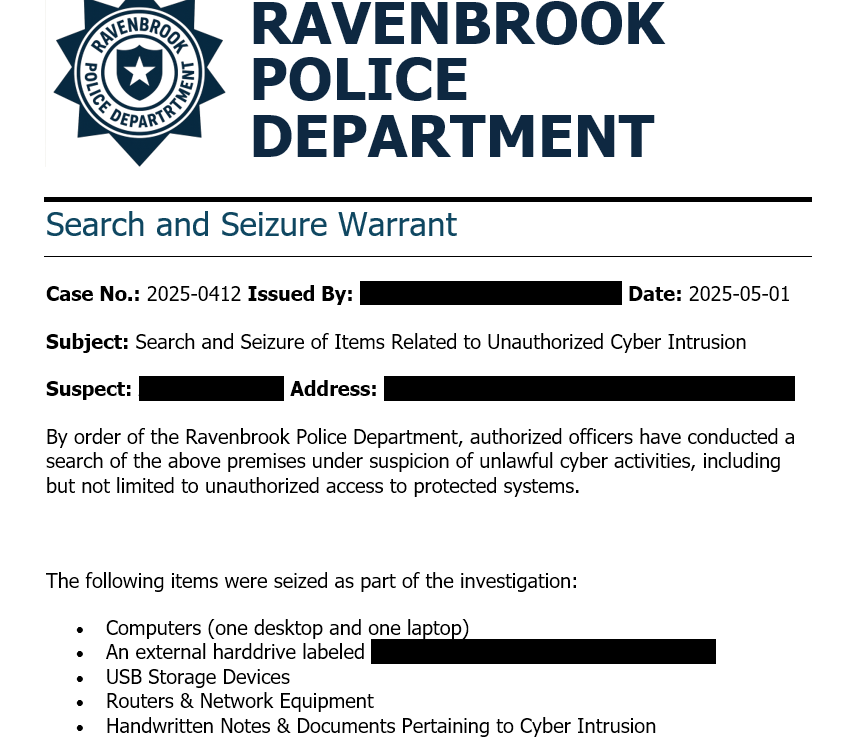
The blacked-out text looked encrypted, for example, one of the strings in the file: q~luaj*-:"#j!rs4v,k| <u-9'$wity8$9!.q\. This is a Word file, so I could unzip it and get more information about the file. The first interesting thing I found was the VBA script (./word/vbaProject.bin):
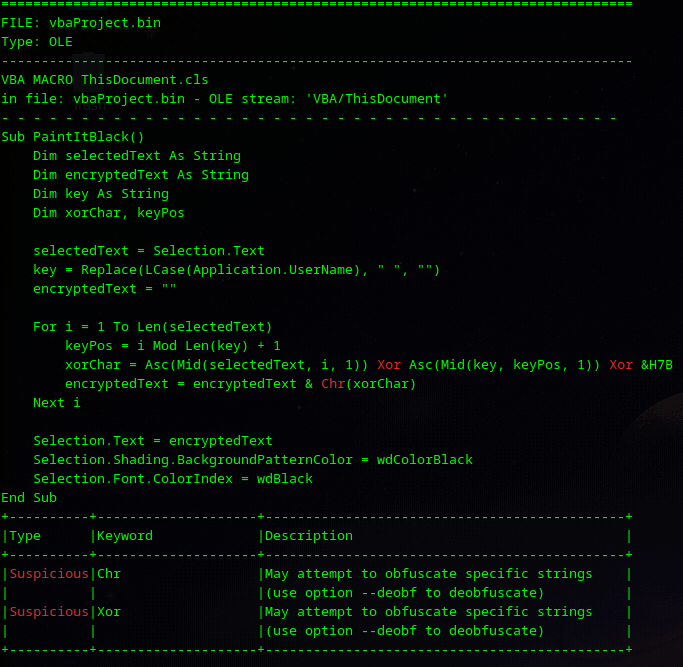
Here I noticed that the script encrypts/decrypts the selected text with 0x7B byte and the lowercased username of the person who created the file, without spaces and starting with the second byte. So I looked for the username and found it in the ./docProps/core.xml file:

After processing the encrypted text using the extracted username, I recovered the flag:

flag{c48219f5ea9d6bb54f7533edfc1a1124}
Writeup author: 0xcheba
iot breach
Description
Please help me! A hacker has attacked my network and now I can't see my files anymore :( Can you please help me to recover them?
Solution
The disk image (.img) was provided. The image contained all files including root directory. There is a directory with encrypted kitten pictures:

I searched through all the files and found several interesting things: in the file ./var/log/lighttpd/access.log I found many logs with strange data. It looked like base64 data that was sent through a web-access ping application with command injection vulnerability:

I decoded all the transferred data and recovered the following Perl script:
use strict;
use warnings;
use Crypt::Mode::CBC;
use File::Find;
# Check if password is provided
die "Usage: $0 <password>
" unless @ARGV == 1;
my $password = $ARGV[0];
# Define encryption parameters
my $cipher = Crypt::Mode::CBC->new("AES");
# Get all files in the current directory
find(sub {
return if -d $_; # Skip directories
return if $_ =~ /.pl$/;
encrypt_file($_);
}, ".");
sub encrypt_file {
my ($file) = @_;
# Read file contents
open my $fh, '<', $file or die "Could not open '$file' for reading: $!";
binmode $fh;
my $data = do { local $/; <$fh> };
close $fh;
# Encrypt the data
my $encrypted = $cipher->encrypt($data, $password, "R4ND0MivR4ND0Miv");
# Write encrypted data back to file
open my $fh_out, '>', "$file.enc" or die "Could not open '$file.enc' for writing: $!";
binmode $fh_out;
print $fh_out $encrypted;
close $fh_out;
print "Encrypted $file -> $file.enc
";
}
print "Encryption complete.
";
I found that pictures were encrypted using the AES algorithm with the Initialization Vector R4ND0MivR4ND0Miv. Also there was an encryption key in the web server logs:

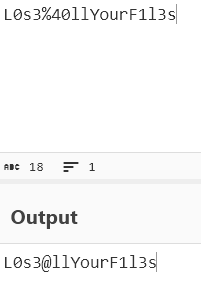
Using the CyberChief, I recovered encrypted pictures and one of the pictures contained the flag:

flag{b5f18f25dd58d68d083e03260c3b6f34}
Writeup author: 0xcheba
BitLocked
Description
An image of an encrypted SD card and a photo of its recovery key are provided, although the final block of the key is obscured by the card.
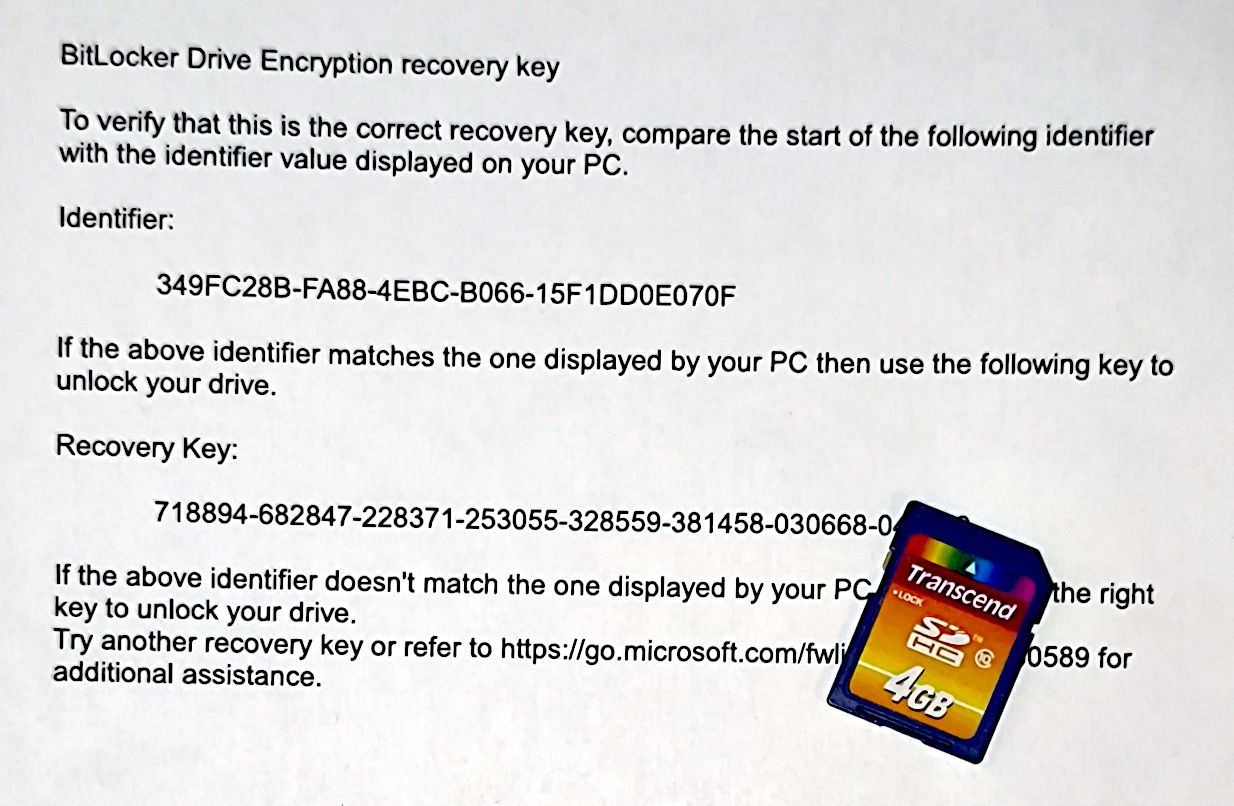
Solution
First, we'll need to mount the BitLocker-encrypted partition, which can be done using a program like OSFMount.
Next, we need to unlock the partition using the recovery key:
manage-bde -unlock F: -recoverypassword 718894-682847-228371-253055-328559-381458-030668-000000
However, the complete key is still unknown. We can assume that the last block begins with "04", leaving us with 10000 possible combinations to check.
I heard that brute-forcing is the ultimate answer to every problem, so:
import subprocess
base_key = "718894-682847-228371-253055-328559-381458-030668-04"
drive = "F:"
for i in range(10000):
last_block = f"{i:04d}"
full_key = base_key + last_block
cmd = [
"manage-bde",
"-unlock",
drive,
"-recoverypassword",
full_key
]
print(f"Trying: {full_key}")
p = subprocess.Popen(cmd, stdout=subprocess.PIPE, stderr=subprocess.PIPE, text=True)
try:
out, err = p.communicate(timeout=10)
if "unlock of the volume was successful" in out.lower() or "already unlocked" in out.lower():
print("SUCCESS:", full_key)
break
except subprocess.TimeoutExpired:
p.kill()
After a few minutes, the correct key is found, and the partition is automatically unlocked:
...
Trying: 718894-682847-228371-253055-328559-381458-030668-047839
Trying: 718894-682847-228371-253055-328559-381458-030668-047840
SUCCESS: 718894-682847-228371-253055-328559-381458-030668-047840
The root directory now contains flag.txt.
flag{874ce13969267c0124118c0d7b25c8cc}
Writeup author: Lazarus
Bonus
Below we are providing the binaries so you can practice, in case you are unable to find them elsewhere.
